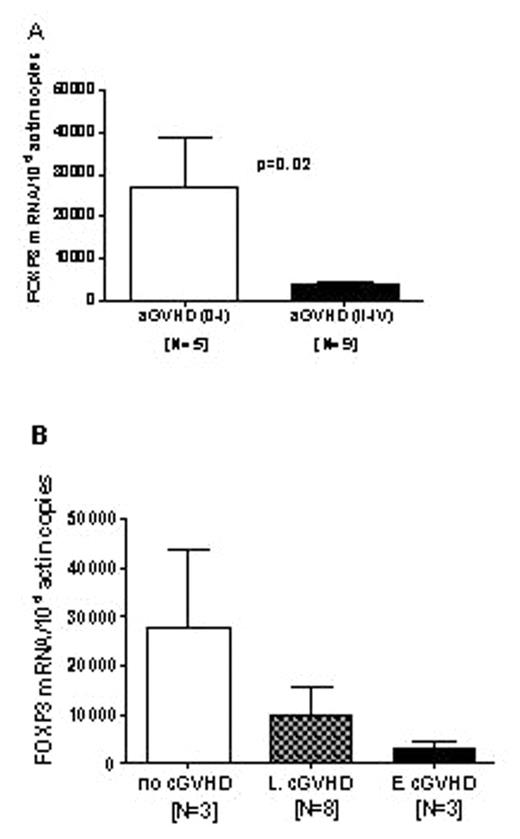Abstract
Data on the impact of regulatory T cells (Tregs) on GVHD following SCT in man is conflicting, possibly due to differences in techniques used to characterize them. We studied reconstitution of CD4+CD25+Foxp3+ T cells in the first 150 days following a T-depleted allogeneic SCT by surface phenotyping, Foxp3 gene expression and functional assays to characterize their post-transplant origin and pattern of recovery relating these findings to GVHD. Although there was a direct correlation between Foxp3 gene expression and CD4+CD25+ T cells in healthy donors the ratio between CD4+CD25+ T cell numbers and Foxp3 gene expression was more variable after SCT. In a longitudinal post-transplant study in 12 patients with leukemia, the Foxp3 copy number and CD4+CD25+ T cells were strongly correlated in 5. In 4 patients CD4+CD25+ and CD4+CD25+CD69+ T cells were disproportionately increased compared with Foxp3 gene expression, corresponding temporally with the development of acute GVHD and suggesting expansion of effector T cells. In 3 patients who did not develop clinically significant GVHD, the ratio of Foxp3 gene expression to CD25 fraction of CD4+ T cells was disproportionately high suggesting that Treg may have expanded or upregulated Foxp3 gene copy numbers. Treg reconstitution was slow in the first 45 days after SCT, lagging behind CD3 recovery but reaching normal levels by day 120. High day 30 Foxp3 gene expression inversely correlated with grade II–IV aGVHD (p = 0.02) and with severity of cGVHD. Chimerism analysis was performed on sorted CD4+CD25+ and CD4+CD25− T cell fractions from 7 patients on day120 samples. In most patients, the expanded Treg population was enriched in cells of donor origin. These results support strategies to prevent GVHD by increasing post-transplant Treg recovery by adoptive transfer of ex-vivo expanded Treg. Conversely, the absence of Treg together with lymphopenia-driven T cell expansion may offer a window of opportunity for boosting GVL effects by vaccination in the first few weeks after transplantation.
Author notes
Corresponding author


This feature is available to Subscribers Only
Sign In or Create an Account Close Modal